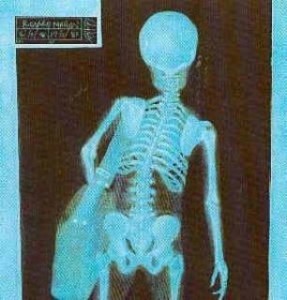Backpacks – Children and Back Pain
It is that time again in Olathe, Overland Park, Spring Hill and Leawood, kids are heading back to school. With kids heading back to school and experiencing a change in routine we often see an increase in kids experiencing neck and back pain. We know that the change in routine, increased time sitting in desks and starting back up with school sports can attribute to back and neck pain, but often we overlook one of the biggest causes, Backpacks. Public health experts have recognized for many years that excessively heavy backpacks can cause back and neck pain in children.  Three new studies have recently been published on this issue, and they shed some light on prevention of back pain in children.
Three new studies have recently been published on this issue, and they shed some light on prevention of back pain in children.
Physical and Psychological Factors in Children with Back Pain
This British study1 was designed to examine ergonomic and other factors that might account for back and neck pain in schoolchildren.
The authors gave questionnaires to 697 children aged 11-14. Of these students, 27% reported having neck pain, 18% reported having upper back pain, and 22% reported having low back pain.
After analysis of the collected data, the authors found the following:
• Neck pain was linked to school furniture, emotional and conduct problems, family history of low back pain and previous treatment for musculoskeletal disorders.
• Upper back pain was associated with backpack weight, school furniture, emotional problems, and previous treatment of musculoskeletal pain.
• Low back pain complaints were associated with school furniture, emotional issues, and “family history and previous injury or accident.”
Effects of Backpack Weight on Posture
This Italian study2 looked at 43 students with an average age of 12.5 years. The authors tested each of the children with an 8-kg and 12-kg backpack, and they had the children wear them over one shoulder and two shoulders. Posture was evaluated on the children while they did a 7-minute treadmill walk.
The authors found that the posture of the children was substantially altered under load. Not surprisingly, asymmetrical loading (carrying the backpack on one shoulder rather than both), resulted in the most complex postural changes.
“Our results suggest that a 12 kg load, fairly common in this population (carried at least once a week), seems to push the postural system to its physiological limits.” 2
They found that the postural changes were corrected once the load was removed, but the long-term consequences of these excessive weights are unknown.
Limit Backpack Weight to 10% of Child’s Body Weight
 In the third report,3 the researchers interviewed 531 children from 5th to 12th grade and weighed the backpack of each student. The found that:
In the third report,3 the researchers interviewed 531 children from 5th to 12th grade and weighed the backpack of each student. The found that:
• “Younger students and females are more at risk due to relatively lower body weight…”
• Female students carried heavier backpacks than did male students.
• “Greater relative backpack weight is associated with upper– and mid–back pain reports but not neck or lower back pain; it is also associated with lost school time, lost school sports time, and greater chiropractic utilization.”
The authors of this study recommend that backpacks weigh no more than 10% of the child’s body weight, which is lower than the current recommendation of 15%. Previous studies have found that students often carry between 17-22% of their body weight. 2
From these studies, it’s clear that a significant number of children suffer from neck and back pain. Because a substantial portion of these complaints may originate in backpack usage, it is critical when dealing with children with neck and back pain to ask about backpack usage. Musculoskeletal pain in children is especially a concern since it has been associated with pain in adulthood.
1. Murphy S, Buckle P, Stubbs D. A cross-sectional study of self-reported back and neck pain among English schoolchildren and associated physical and psychological risk factors. Applied Ergonomics 2007;38(6):797-804.
2. Negrini S, Negrini A. Postural effects of symmetrical and asymmetrical loads on the spines of schoolchildren. Scoliosis 2007;2(1):8.
3. Moore MJ, White GL, Moore DL. Association of Relative Backpack Weight With Reported Pain, Pain Sites, Medical Utilization, and Lost School Time in Children and Adolescents. Journal of School Health 2007;77(5):232-239. Foster Family Chiropractic

